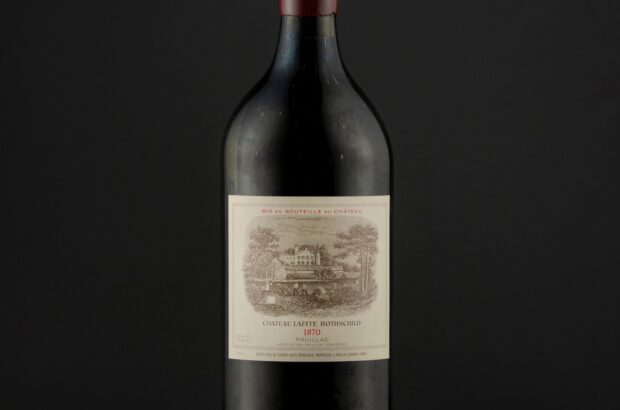Following a very merry Christmas, are you in the first few days of a self-imposed dry January? Dr Michael Apstein, a gastroenterologist and a wine writer, explains how our bodies process alcohol and whether a New Year detox really works.
Dr Michael Apstein: the science of dry January
The first question I get when people hear that I’m a gastroenterologist (liver doctor) who writes about wine is: ’how much is safe to drink?’ My answer is always the same – ‘it depends’ – and it’s difficult to be more helpful.
Safe levels of alcohol consumption differ depending on the individual. People metabolise (break down) alcohol differently, resulting in dramatic differences in its absorption into the blood. This amount of alcohol – the blood alcohol concentration (BAC) – determines its effect on the body. The more a person can metabolise the alcohol, the less gets into the blood stream. hence, those individuals who metabolise alcohol more efficiently will have a lower BAC, a lower risk of adverse effects from it and become less intoxicated.
The speed of drinking and whether you’re drinking spirits or wine has an enormous impact on BAC. But so does your gender and age, whether you eat while drinking, whether you are a sporadic or daily drinker and – perhaps surprisingly – which wine you drink.
How often do you drink?
Whether a person has been drinking daily or sporadically determines the rate at which the liver breaks down alcohol. This is because the enzymes responsible are inducible, meaning the liver makes more of them when it needs to, like a factory that recruits more workers when business picks up. Drinking one or two glasses of wine daily stimulates the liver to make more alcohol dehydrogenase. Consequently, people who drink daily are capable of metabolising more alcohol than those who drink only on the weekends because their livers contain more alcohol dehydrogenase. This means that the chronic imbiber will have a lower BAC than the sporadic drinker after consuming the same amount of alcohol.
This only holds true to a point, though. You can never induce enough enzymes to offset the potentially lethal effects of binge drinking, a practice that must be avoided since it is always hazardous.
Gender and age
The breakdown of alcohol starts in your stomach, where an enzyme called alcohol dehydrogenase (similar to the ones found in the liver) is located. Women either have less of this stomach enzyme or it works less well in them than men because oestrogens inhibit it – scientists haven’t figured out which. As a consequence, women break down less alcohol in the stomach, which means that more passes into the small intestine where it is absorbed. The end result is that a woman, despite drinking an equal quantity of alcohol at the same rate as a man, will have a higher BAC.

This table compares a 60kg woman with an 80kg man, each of whom consumes two 175ml glasses of wine over a 90-minute period. The values are calculated using the formula from Global Rph.
Body composition also favours men when it comes to reducing BAC. Alcohol is distributed only in the parts of the body composed of water, as opposed to fat. Since men’s bodies contain a higher proportion of water than women’s bodies, the same amount of alcohol will be dispersed in a larger volume, resulting in a lower BAC.
And a 60-year old man or woman will have a higher BAC than a 25-year-old drinking the same amount of alcohol. As individuals age, their livers – and maybe their stomachs – contain less of the enzymes that break down alcohol. And to make matters worse, as people age, their bodies lose water and gain fat. A 60-year-old man cannot break down the alcohol as quickly because he has fewer alcohol-metabolising enzymes, and since he has less body water, there is less volume into which the alcohol can be diluted.
Eating whilst drinking
When we eat – especially when we eat fat or protein – the stomach automatically slows the speed with which it delivers the food to the small intestine, allowing for a slow and steady absorption of nutrients from the small intestine. Consequently, drinking wine with a meal (as opposed to drinking it on an empty stomach) results in the alcohol staying longer in the stomach, allowing more of it to be broken down. As a result, less alcohol reaches the small intestine and less is absorbed into the blood. And voilà, the BAC is lower in individuals who drink wine with meals than it is in those who drink it on an empty stomach.
The rate at which the stomach empties its contents into the small intestine might explain the additional buzz people describe from drinking sparkling wine. In 2003, British researchers showed that the blood alcohol level is higher after people drink Champagne than after they drink the same amount of defizzed bubbly. A reasonable, but as yet unproven, explanation is that the carbonation stimulates gastric emptying and thereby reduces the time the alcohol remains in the stomach where enzymes would break it down.
Increased alcohol content in wine
The alcohol content of wine has crept up over the past few decades as producers delay their harvests in a bid to achieve ever more ripeness in the grapes and make (what they think are) more flavourful wines. Riper grapes contain more sugar, which translates into higher alcohol levels after fermentation.
A lot has been written about the taste and style of these ‘modern’ or ‘blockbuster’ wines and whether they have the ability to develop with bottle age. But absent from the discussion is the effect these more robust wines have on BAC. It’s not trivial.
Seemingly small differences in the alcohol content of a wine result in dramatic and important differences in BAC. Going from two glasses of white Burgundy containing about 13% alcohol by volume, to an equal amount of (usually) higher-octane Australian Chardonnay at 14% for instance, could determine whether you’re under or over the legal limit for driving. Indeed, as the wine’s alcohol content increases from 12% to 15% – a 25% jump – blood alcohol levels rocket up 33% to 43%, depending on gender (see table above).
Loose regulations
Part of the problem in estimating BAC when drinking wines produced in the US is the discrepancy between the wine’s stated and real alcohol content. Although EU regulations permit a tolerance of plus or minus 0.5%, looser US regulations allow a tolerance of plus or minus 1.5% of alcohol for wines under 14% alcohol and plus or minus 1% for wines over 14%. Hence, a US wine label recording alcohol concentration as 13.5% means that the wine could, in fact, contain 15% alcohol.
Is there anything you can do?
There’s no magic way to reduce BAC. Drinking vast quantities of water won’t do it because normal kidney function prevents you from increasing body water into which the alcohol could be diluted. Drinking coffee or taking other stimulants may make you ‘feel’ more alert, but has no effect on BAC. Even consuming a large, rich meal after drinking is ineffective – the horse has already bolted. The normal liver will continue to break down alcohol at a rate of about eight grams (one unit) an hour. So the only way to reduce BAC after drinking is to wait.
So can a dry January help?
Some people believe that ‘giving your liver a rest’ by abstaining from alcohol for a month or so is beneficial. In fact, there’s no science to support this practice, nor does it make sense physiologically. The liver can metabolise a small and steady amount of alcohol without difficulty.
If you think you need to take a month off, you’re either drinking too much during the rest of the year or you have a guilty conscience.
But giving up alcohol will, all other things being equal, result in a modest weight loss. Foregoing one 175ml glass of wine a day for a month will save you the caloric equivalent of 0.5kg of weight.
Michael Apstein MD is a gastroenterologist at the Beth Israel Deaconess Medical Center in Boston and an assistant professor of medicine at Harvard Medical School. He is also a freelance wine writer, editor and wine judge.
Drinkaware video: What is a unit?







